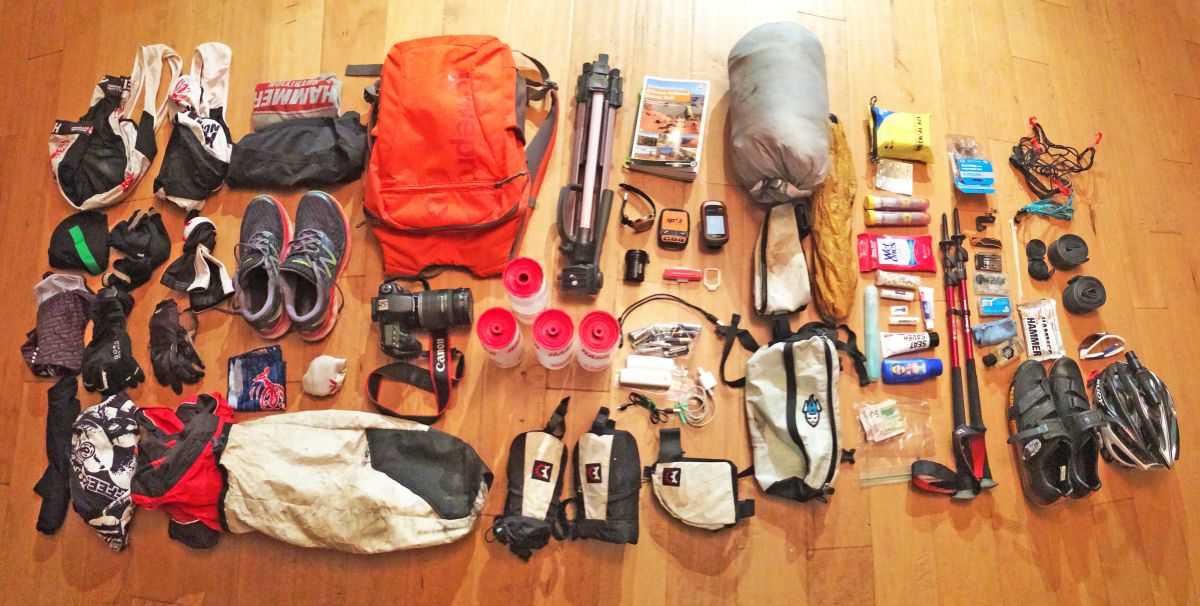Essential gear for bikepacking
Equipment to have with you for a big bike trip

by Ryan Correy
Last summer, I completed the 1,200-km Arizona Trail (AZT). The Mexico to Utah traverse is considered the most challenging bikepacking route in the world – with its technical hike-a-bike sections and remote desert conditions – followed closely by the Tour Divide, revered for its length and daunting mountain climbs. Having the right gear for bikepacking is essential to making a trip go smoothly.
RELATED: What are an off-road rider’s responsibilities?
My equipment list is ever evolving but there is some gear for bikepacking that is essential. Hiking poles, running shoes and pack straps are part of the AZT variation. I need them for crossing the Grand Canyon, where I disassemble and hike my Giant XTC 29er. I’m also using an ultra-light tent (instead of a more compact bivouac sack) to create some separation between where I sleep and rattlesnakes coming out of hibernation.
I begin the planning process by organizing my gear into the following categories. Here is the essential gear for bikepacking:
Safety gear for bikepacking
Inclement weather, a mechanical issue or a bad accident can leave you in a tough spot, even if you are not far from help. To make sure my friends and family know where I am, I use Spot satellite messenger (findmespot.ca). I also opt for the GEOS search and rescue coverage.
Navigation
You’ll want to carry a GPS device (AA battery powered is my preference), topographic route maps and restock cues that you research in advance.
Hygiene
Smelling gross: OK. Rotting skin: bad. Carry a pack of baby wipes to clean your nether regions and bike shorts, daily. Anything else is a luxury.
Mechanical
Carry tools to tighten all screws on your bike, repair flats, brace a sliced sidewall and swap out broken spokes or even your derailleur hanger. Also, keep you your drivetrain clean. I use Orontas ( orontas.com ) biodegradable, plant-based chain lubricants. I apply them twice a day on multi-day adventures.
Fuel
You should consume at least 270 calories per hour during longer and slower efforts. I use Perpetuem by Hammer Nutrition ( hammernutrition.ca ) It’s an efficient way to pack plenty of calories that just require water.
Packs
Traditional pannier racks are prone to metal fatigue on bumpy trails. It’s better to use custom-sewn packs that affix directly to your frame, handlebar and seatpost. Calgary’s Porcelain Rocket (porcelaintocket. com), by Scott Felter, is one of the go-to makers.
Sleep
Setup Being comfortable means trapping body heat and protecting yourself from the elements. You’ll want to invest in a quality sleeping bag (insulation), sleeping pad (to prevent conduction with the ground) and a lightweight shelter.
Clothing
The right three layers can reduce much of your clothing bulk. The first layer should wick moisture from your skin, the second should insulate well and the outer layer should protect you from wind and rain. Remember to pack smart. Every piece of gear should have multiple purposes.
Ryan Correy is the host of the Bike Pack Canada podcast. Check it out at bikepack.ca


